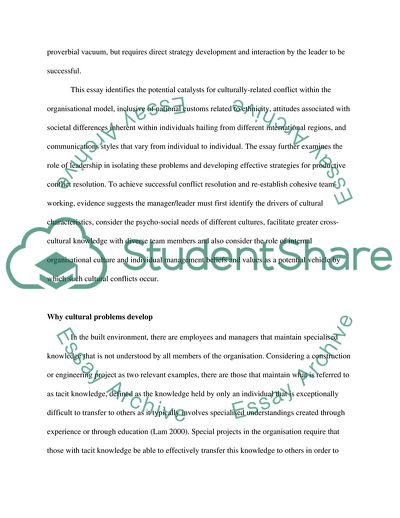Cite this document
(Reconciling and Harmonising Cultural Conflict Coursework Example | Topics and Well Written Essays - 3250 words, n.d.)
Reconciling and Harmonising Cultural Conflict Coursework Example | Topics and Well Written Essays - 3250 words. https://studentshare.org/social-science/1801096-people-and-organisation-management-in-the-built-environment
Reconciling and Harmonising Cultural Conflict Coursework Example | Topics and Well Written Essays - 3250 words. https://studentshare.org/social-science/1801096-people-and-organisation-management-in-the-built-environment
(Reconciling and Harmonising Cultural Conflict Coursework Example | Topics and Well Written Essays - 3250 Words)
Reconciling and Harmonising Cultural Conflict Coursework Example | Topics and Well Written Essays - 3250 Words. https://studentshare.org/social-science/1801096-people-and-organisation-management-in-the-built-environment.
Reconciling and Harmonising Cultural Conflict Coursework Example | Topics and Well Written Essays - 3250 Words. https://studentshare.org/social-science/1801096-people-and-organisation-management-in-the-built-environment.
“Reconciling and Harmonising Cultural Conflict Coursework Example | Topics and Well Written Essays - 3250 Words”. https://studentshare.org/social-science/1801096-people-and-organisation-management-in-the-built-environment.


